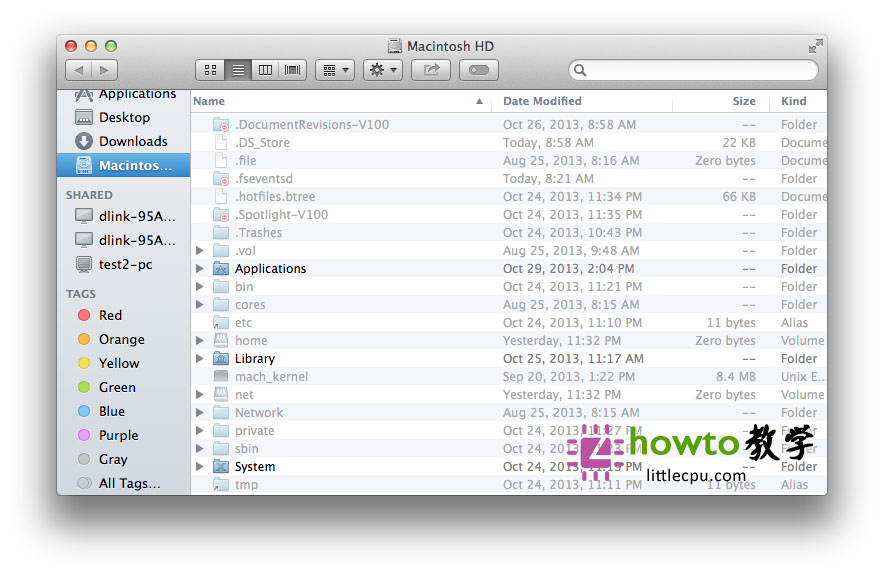

- Osx show dot files how to#
- Osx show dot files mac os x#
- Osx show dot files password#
Press ctrl + X to exit the file and return to the command line.Press ctrl + O and hit return to save the file.bash_profile file, paste the following: alias showFiles='defaults write AppleShowAllFiles YES killall Finder /System/Library/CoreServices/Finder.app'īelow that, paste the following: alias hideFiles='defaults write AppleShowAllFiles NO killall Finder /System/Library/CoreServices/Finder.app'
Osx show dot files password#
Enter your Mac's administration password if required, then hit return. In Terminal, paste the following: sudo nano ~/.bash_profile. As we want this to be a shortcut used now and in the future, let's make it permanent: Using an easy to remember alias, we can turn the above four step process into just one.Īn alias can be made temporarily (just for the use of one terminal session) or permanently. Show/Hide Hidden Files using Terminal AliasesĪ Terminal alias is a name or shortcut for one or multiple commands. It's not the longest set of instructions or the biggest command to commit to memory but if you're doing this a lot, it's worth spending a few minutes now to save yourself a lot more time in the future. To hide them again, follow the same steps but replace the Terminal command with: defaults write AppleShowAllFiles NO Relaunch Finder by right clicking the Finder Icon whilst holding the `option/alt` key  Hold the 'Option/alt' key, then right click on the Finder icon in the dock and click Relaunch. In Terminal, paste the following: defaults write AppleShowAllFiles YES. Open Terminal found in Finder > Applications > Utilities.
Hold the 'Option/alt' key, then right click on the Finder icon in the dock and click Relaunch. In Terminal, paste the following: defaults write AppleShowAllFiles YES. Open Terminal found in Finder > Applications > Utilities. Osx show dot files mac os x#
The long way to show hidden Mac OS X files is as follows: Thanks to Guido Schlabitz for making me aware of this new shortcut. If you're using a version earlier than macOS Sierra, see Show/Hide Hidden Files using Terminal Aliases to setup a toggle command via terminal. Press once to show hidden files and again to hide them. Since the release of macOS Sierra, when in Finder, it is now possible to use the shortcut: CMD + SHIFT +. The Quickest Way to Show/Hide Hidden Files All I need do now is type showFiles and hideFiles whenever I need to show/hide OS X's hidden files. Today I decided to make a short and easy to remember alias to speed up the process. bash-3.2$ crunchifyHideFilesĮnjoy.It seems like every day I search Google for the command to show hidden files on Mac OS X, not to mention Googling for the command to then hide those hidden files a few minutes later. Now just use crunchifyHideFiles and crunchifyShowFiles command directly in Mac OS X Terminal to Hide/Show hidden files in Finder Window. Enter below alias to file and save fileĪlias crunchifyShowFiles='defaults write AppleShowAllFiles TRUEĪlias crunchifyHideFiles='defaults write AppleShowAllFiles FALSE.If you don’t have file already exist then just create a new one 🙂
Osx show dot files how to#
Open Terminal found in Finder > Applications > Utilitiesīash-3.2$ defaults write AppleShowAllFiles TRUEīash-3.2$ defaults write AppleShowAllFiles YESīash-3.2$ killall Finder Same way if you want to Hide all hidden files then use this command: bash-3.2$ defaults write AppleShowAllFiles FALSEīash-3.2$ defaults write AppleShowAllFiles NOīash-3.2$ killall Finder Bonus Tips: How to simplify this process by adding an Alias in. If you want to Show all hidden files then use this command: Eclipse: Missing web.xml file? How can I create web.xml in Eclipse?. jar files and it took some time for me to figure out how to see these hidden files. m2 and location of this directory in Windows machine (Inside Users Folder) Or in Home directory in case of Mac machine. jar files from repository to local machine in a default directory name. m2 folder. As we know Maven Downloads all. If you have used Maven in past then you might have some info about. How to access the hidden files on your Mac computer. How to Show Hidden Files on a Mac? How to Access Your Mac’s Hidden Files?īy default, Mac OS X keeps all files and folders starting with. The files will now be visible in Finder, and you can access them as you would any other file.Īlternatively, you can use the Terminal application to show hidden files by using the command “defaults write AppleShowAllFiles YES” and “killall Finder” in the terminal. This will toggle the visibility of hidden files in Finder. To show hidden files in Finder on a Mac, you can use the following steps:






 0 kommentar(er)
0 kommentar(er)
